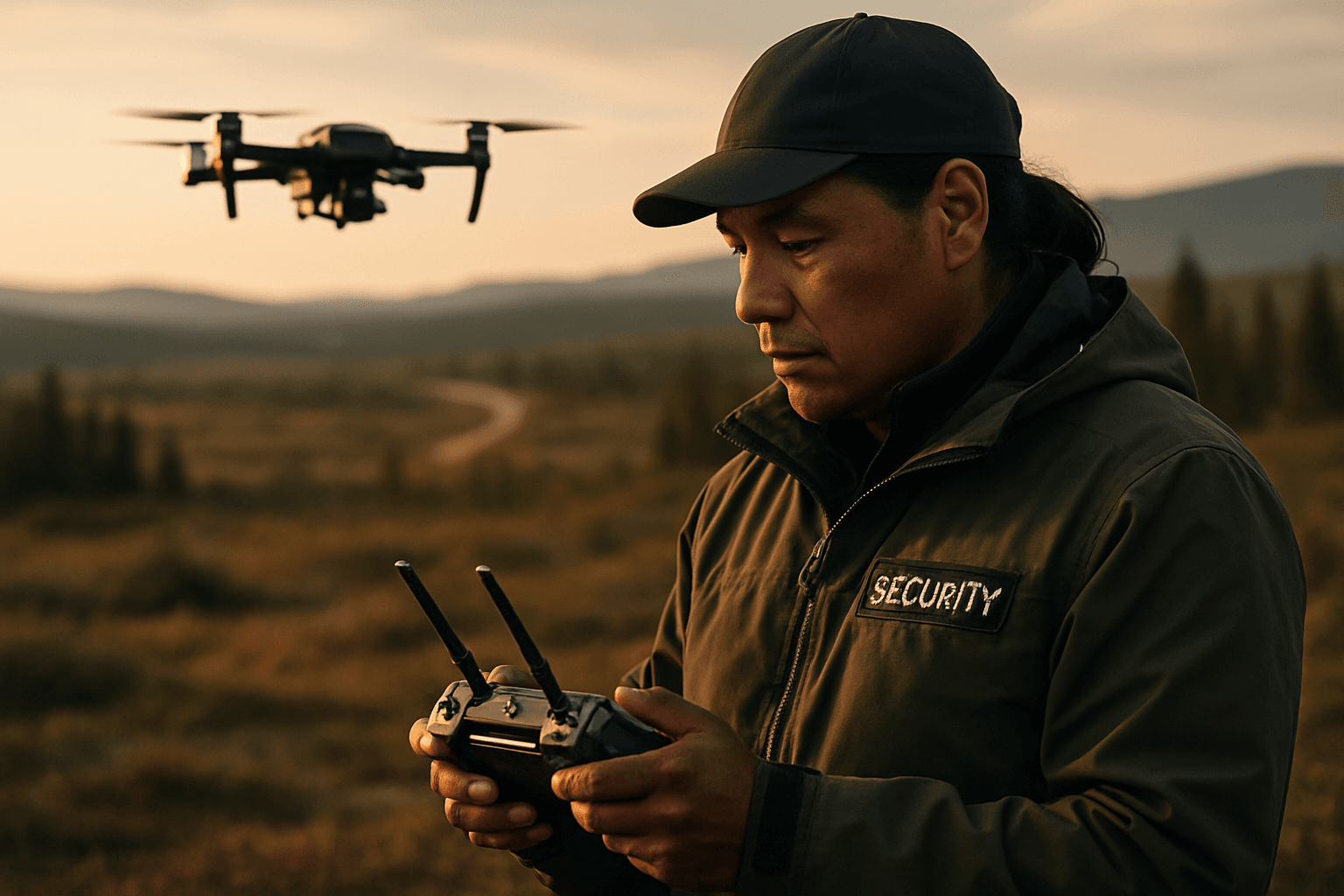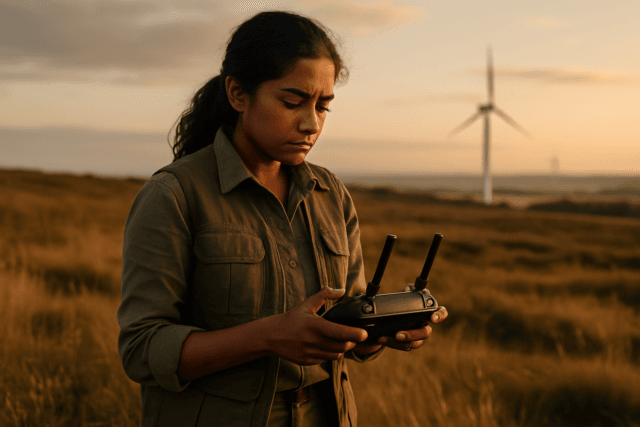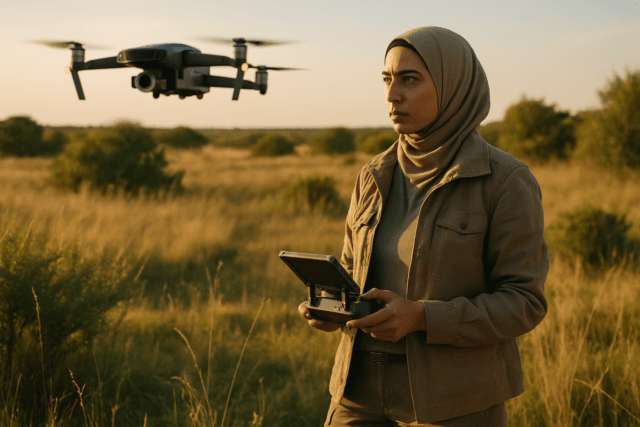Remote communities, often vast and sparsely populated, face unique challenges in ensuring adequate security. Traditional ground patrols can be costly, time-consuming, and limited in reach, leaving large areas vulnerable. However, the advent of Unmanned Aerial Vehicles (UAVs), commonly known as drones, is rapidly transforming this landscape, offering a dynamic, efficient, and increasingly indispensable solution for surveillance and security in these hard-to-reach areas.
Why Drones are a Game-Changer for Remote Security
Drones offer a myriad of advantages that make them ideally suited for enhancing security in isolated or expansive regions. Their capabilities extend far beyond what conventional security methods can provide.
Enhanced Surveillance and Coverage
One of the most significant benefits of drones is their ability to provide an aerial, bird’s-eye view, covering vast perimeters that are impractical or impossible for ground-based security. Equipped with high-resolution cameras, including thermal and night vision capabilities, drones can operate 24/7, detecting anomalies and suspicious activities even in low-light conditions or through foliage. This comprehensive coverage eliminates blind spots that traditional static cameras might miss. For instance, a single long-range surveillance drone can monitor hundreds of acres in a single flight, providing real-time data.
Rapid Response and Deterrence
In the event of an alarm or suspicious activity, drones can be deployed almost instantly, reaching the scene much faster than human patrols. This rapid response allows security personnel to assess the situation quickly and make informed decisions, potentially mitigating threats before they escalate. Furthermore, the visible presence of drones conducting aerial patrols can act as a significant deterrent to potential intruders or malicious actors.
Cost-Effectiveness and Reduced Risk
Compared to traditional security measures, such as maintaining a large security force or installing extensive fixed camera infrastructure, drones offer a cost-effective solution. They require less manpower to operate and maintain, leading to significant savings in labor and operational expenses. Beyond financial benefits, drones significantly reduce the risk to human security personnel by allowing remote monitoring of hazardous, unreachable, or high-risk environments, keeping human operators out of harm’s way.
Versatility and Advanced Capabilities
Modern security drones are incredibly versatile. They can be programmed for autonomous flight paths, conduct scheduled patrols, or be manually controlled to focus on specific areas of interest. Many are integrated with advanced technologies such as AI-powered analytics for real-time threat detection and motion tracking, GPS sensors, and the ability to stream live video feeds to command centers. Some can even support two-way communication, facilitating coordination between security teams. Drones can also be equipped with specialized payloads for various tasks, including search and rescue operations in remote or inaccessible areas, which is crucial for public safety in rural communities. Tethered drones offer continuous, uninterrupted surveillance without battery limitations, ideal for long-duration monitoring of critical infrastructure or perimeters.
Challenges and Considerations in Drone Deployment
Despite their immense potential, the widespread deployment of drones for security in remote communities is not without its challenges.
Regulatory and Legal Hurdles
The legal landscape surrounding drone operation is still evolving. Authorities worldwide, such as the Federal Aviation Administration (FAA) in the United States, are establishing regulations for commercial drone use, including certifications and operational protocols. New regulations, such as Beyond Visual Line of Sight (BVLOS) operations, are expanding use cases but require careful implementation.
Privacy and Ethical Concerns
The ability of drones to capture high-resolution imagery and conduct discreet surveillance raises significant privacy concerns. Ensuring responsible use and addressing public apprehensions about intrusion and data privacy violations is crucial. Implementation of technologies like geofencing can help restrict drones from entering sensitive or private areas, ensuring compliance and preventing unauthorized access.
Technical Limitations and Cybersecurity Risks
While drone technology is advancing rapidly, limitations still exist. Battery life, weather dependency, and the need for robust connectivity in areas with limited or no cellular service can pose operational challenges. Furthermore, like any connected system, drones are susceptible to cybersecurity threats, including unauthorized access and cyber-attacks. Implementing strong encryption protocols, secure communication channels, and intrusion detection systems is essential to protect drone systems and data integrity.
Integration and Skill Gaps
Integrating drones seamlessly into existing security infrastructure requires careful planning and compatible systems. There is also a need for skilled operators to manage drone fleets, although intuitive technology is making training easier.
The Future of Drone Security in Remote Areas
The future of drone deployment for security in remote communities looks promising, with continuous advancements addressing current limitations and expanding capabilities.
Increased Autonomy and AI Integration
Autonomous drones, powered by AI and advanced sensors, are becoming increasingly sophisticated. They can execute pre-planned flight patterns, conduct autonomous threat responses, and even follow suspects or officers without constant human control. This autonomy will lead to more efficient and reliable surveillance, reducing the need for continuous human oversight.
Enhanced Sensor Technology and Connectivity
Future drones will feature even more advanced thermal sensors, multispectral imaging, and improved motion controls, making them more effective in various conditions. The integration of 5G and LTE connectivity will enable remote drone operation and live-streaming over even longer distances, crucial for vast remote areas.
Broader Public Safety Applications
Beyond traditional security, drones are poised to play an even larger role in public safety in remote communities. They can assist in search and rescue missions, disaster assessment, wildfire monitoring, and even deliver medical supplies or establish temporary communication networks in emergencies. Some initiatives are exploring “Drone as First Responder” models, where drones can automatically respond to emergency calls, significantly improving response times and providing critical situational awareness before human responders arrive.
Addressing Ethical and Regulatory Frameworks
As drone technology evolves, so too will the regulatory and ethical frameworks governing their use. Ongoing dialogue and collaboration between technology developers, policymakers, and communities will be essential to ensure responsible and trusted deployment.
The deployment of drones represents a significant leap forward in securing remote communities. By offering enhanced surveillance, rapid response, cost efficiencies, and improved safety for personnel, UAVs are proving to be an invaluable asset in safeguarding large, often vulnerable, areas. As technology progresses and challenges are addressed, drones will undoubtedly become an even more integral component of comprehensive security strategies for the world’s most isolated regions.





